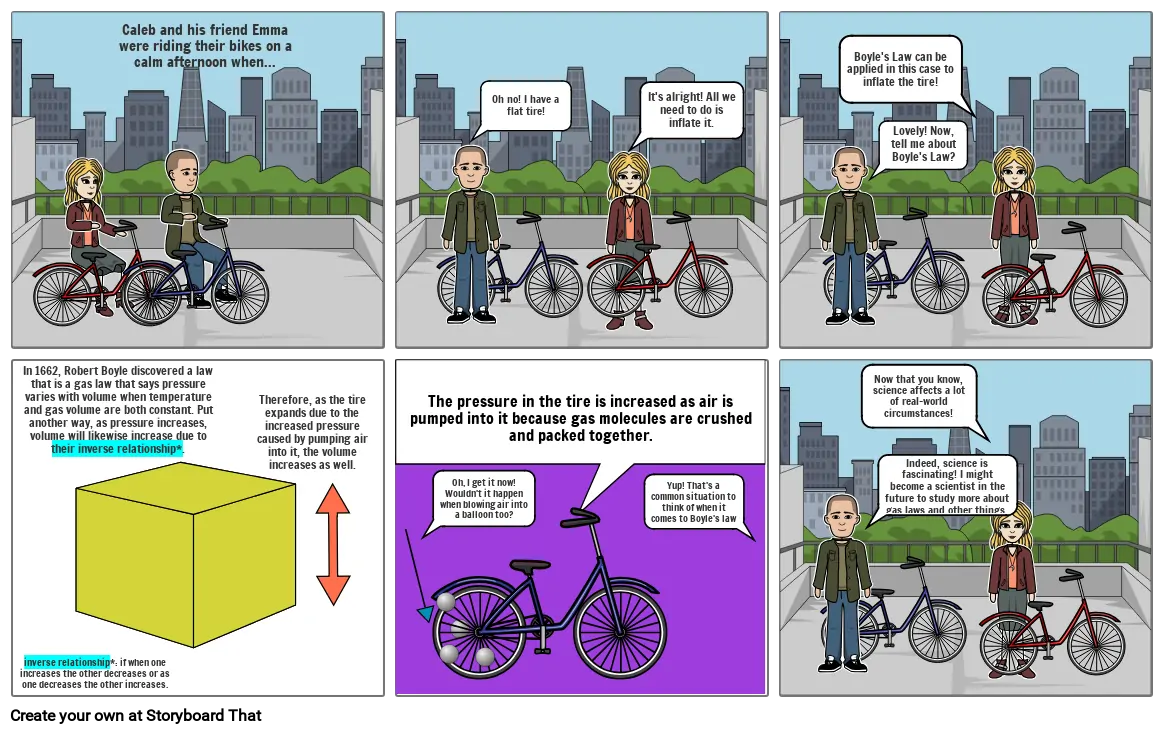chemistry project alanoud Alfozan

Storyboard Text
- Caleb and his friend Emma were riding their bikes on a calm afternoon when...
- Oh no! I have a flat tire!
- It's alright! All we need to do is inflate it.
- Boyle's Law can be applied in this case to inflate the tire!
- Lovely! Now, tell me about Boyle's Law?
- inverse relationship*: if when one increases the other decreases or as one decreases the other increases.
- In 1662, Robert Boyle discovered a law that is a gas law that says pressure varies with volume when temperature and gas volume are both constant. Put another way, as pressure increases, volume will likewise increase due to their inverse relationship*.
- Therefore, as the tire expands due to the increased pressure caused by pumping air into it, the volume increases as well.
- The pressure in the tire is increased as air is pumped into it because gas molecules are crushed and packed together.
- Oh, I get it now! Wouldn't it happen when blowing air into a balloon too?
- Yup! That's a common situation to think of when it comes to Boyle's law
- Now that you know, science affects a lot of real-world circumstances!
- Indeed, science is fascinating! I might become a scientist in the future to study more about gas laws and other things.
Over 30 Million Storyboards Created
No Downloads, No Credit Card, and No Login Needed to Try!
